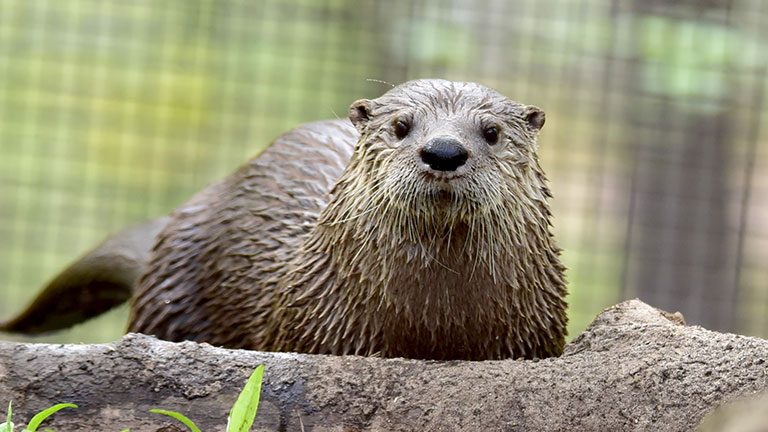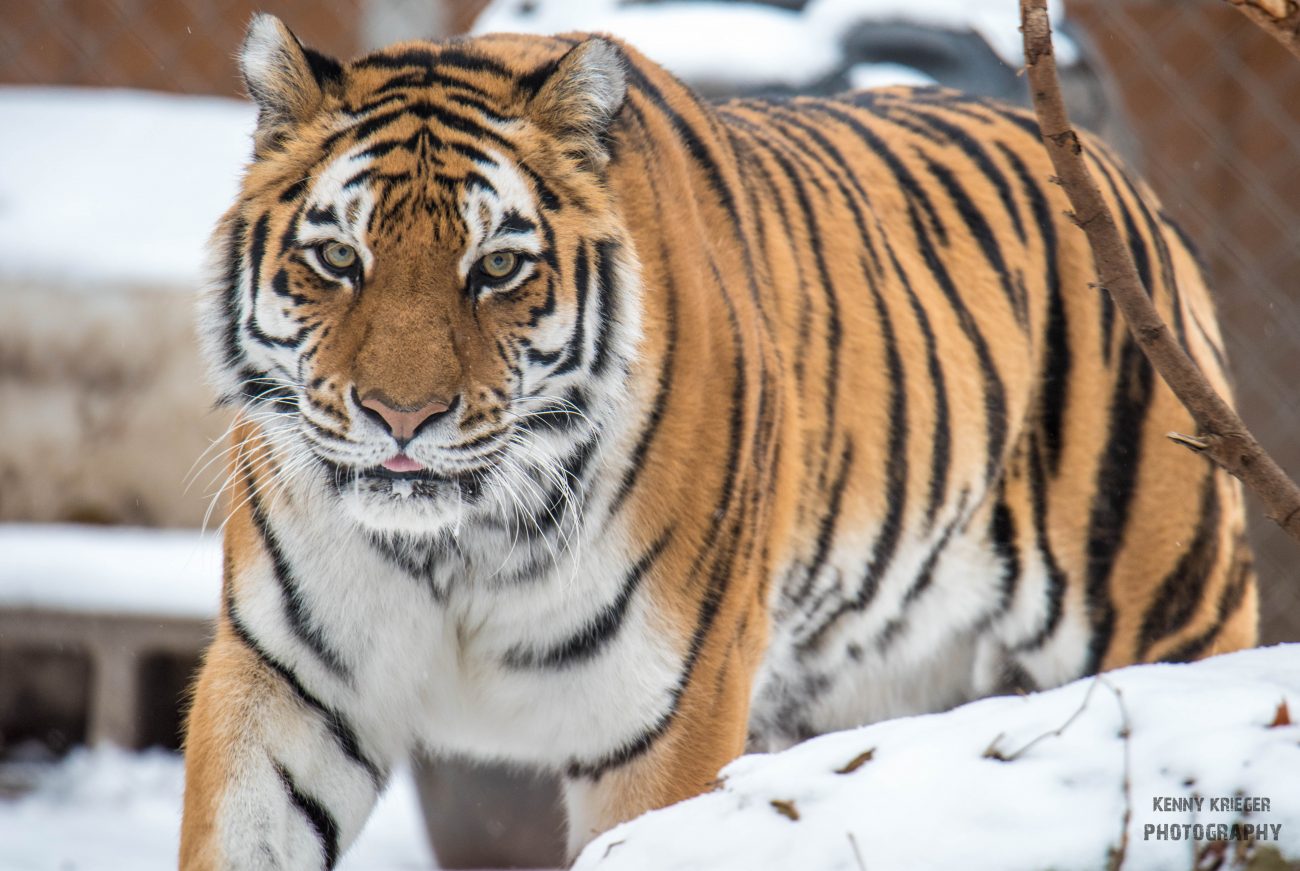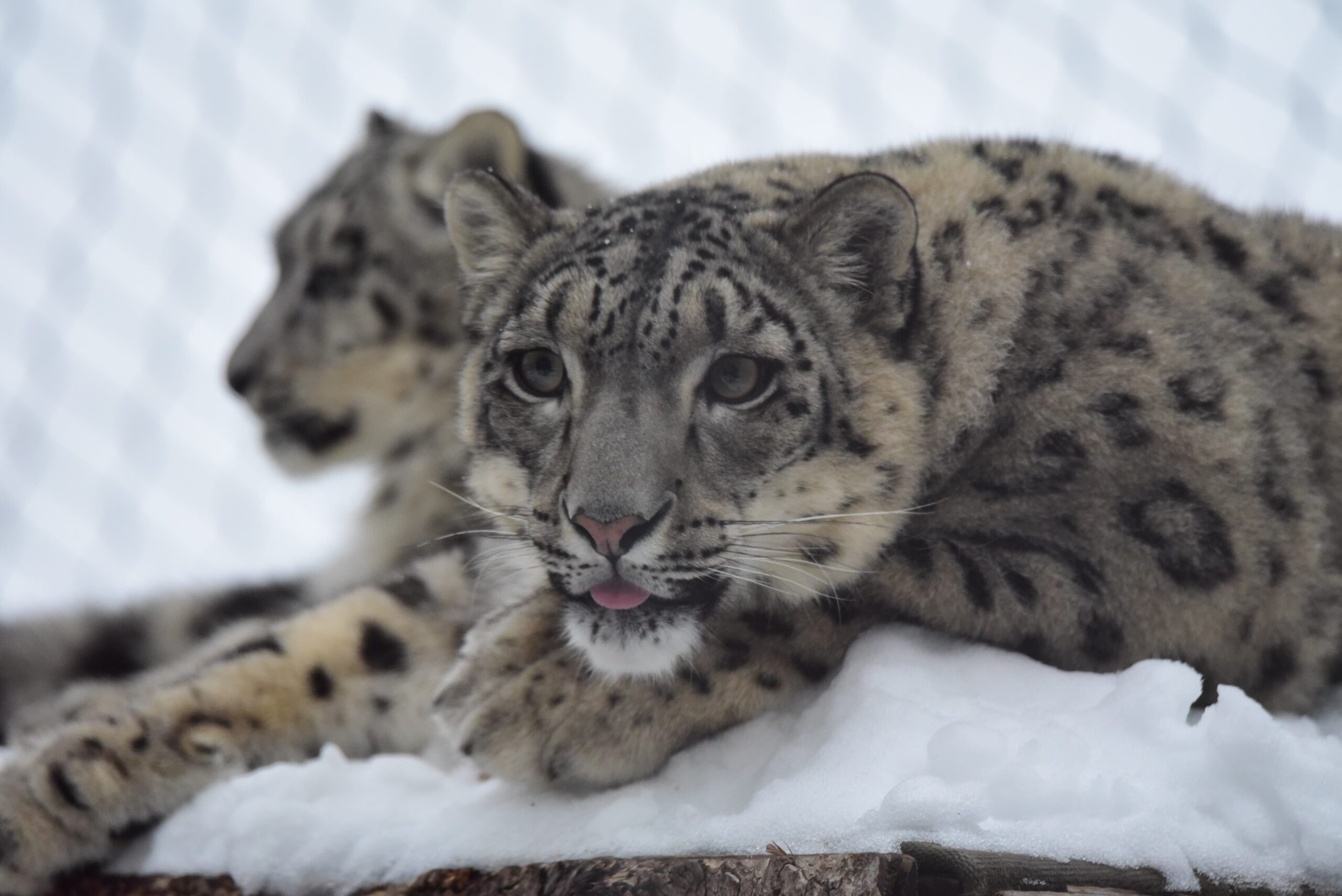In celebration of Mother’s Day, we’re recognizing our many animal moms at the Zoo. Hear a little bit about each of them from their keepers!
California Sea Lions
James Weinpress
With Mother’s Day right around the corner, I wanted to share some fun facts about Lily, Seneca Park Zoo’s resident California sea lion mom, and how her species raises pups to survive the rigors of life on rocky coasts of the Pacific Ocean!
California sea lions (Zalophus californianus) are found on the west coast of the U.S. from British Columbia to Baja, California. During their breeding season, typically May to August, females head south to warmer climates to give birth to a single pup before breeding with the strongest male within their territory.
Quickly after birth, mother and pup learn to identify one another through vocalizations and their unique scents. This allows for the mother to identify their own pup from dozens of other pups scattered along a beach when returning from foraging at sea. As the pup grows, the mom will spend longer time away hunting to replenish her energy and milk supply.
Lily arrived at the Seneca Park Zoo in 1997 as a pup, after rehabilitation from a gunshot injury to her right front flipper. She was deemed non-releasable due to the severity of her injury and her young age. Lily is our oldest sea lion at approximately 10 years old; she is a calm and patient animal that her keepers very much enjoy working with!
As an accredited institution of the Association of Zoos and Aquariums (AZA), Seneca Park Zoo participates in the Species Survival Plan (SSP) for California sea lions. This conservation program sends out breeding recommendations to zoological facilities across the country, and ensures the sea lion population under human care is healthy and genetically diverse.
To everyone’s delight, Lily became a first time mother in June 2017 when she gave birth to Bob. Bob has grown quickly and, at approximately 200 pounds, is already almost as heavy as Lily! As a mature male, he may grow to weigh anywhere between 500 to 700 pounds.
On Mother’s Day this year, think about the ways you can support Lily and her wild counterparts along the coast. We share our love of seafood with sea lions, so purchasing sustainably sourced seafood ensures that there will be healthy populations of fish for both humans and sea lions for generations to come. Check out the Monterey Bay Aquarium’s Seafood Watch program to learn which are the best seafood choices.
Olive baboons
Jenna Bovee
Does anyone know how many moms we have in our baboon troop? We have five! Pimiento, Pearl, Peperella, Olive Oil, and Sabina. Pearl is also a grandmother to Peperella’s son, Pico de Limon. Although these females aren’t recent mothers, their role as one still remains. Being incredibly social beings, just like human families, they comfort and support each other, and squabble and fight!
Females typically stay with their natal troop their entire lives. They are born into their position within the troop, and if they are high-ranking, they will hand their position on to their daughters. Mothers form strong bonds of friendship, tending to stick together to give each other support and share child-care duties. Sound familiar to all of you moms out there?
As their youngsters have aged into adults, these mothers continue to share behaviors with their offspring such as grooming, protecting them during spats with others and because they are such vocal creatures, they even have become someone to chat about life with. During your next Zoo visit, look for those that have paired off to groom and sleep together. They are probably our moms with their offspring!Snow Leopards
Heidi Beifus
Do you ever wonder what it’s like to be a snow leopard mother? This is snow leopard Timila’s first “official” Mother’s Day. Last year at this time, she was presumed pregnant, and expecting to give birth by mid-June. The average gestation period for snow leopards is approximately one hundred days, with about a two week window. The snow leopard breeding season is typically January through April, so females usually give birth from April to August. Timila gave birth on May 27, 2019, to a boy, later to be named Silver. She had just turned 3 years old herself, only three days before that, on May 24th. What a birthday present that was!
Even though she was a young first-time mom, her motherly instincts kicked right in. From that point on, Timila and her cub spent the next two months inside their private maternity den, which contained a specially designed nest box just for them. Timila spent all of her time nursing him, and cleaning him, and keeping him safe and warm. It is during this time period that cubs ears and eyes open, and they learn to crawl and walk. She only left that area just long enough to get food and go to the bathroom.While Timila was secured separately in the adjoining room eating, she let her keepers do a quick cub check, which she allowed because of the trust they had built with each other. Timila began forming her relationship with her keepers in March of 2018, when they picked her up from the Metro Richmond Zoo in Virginia. It is that same bond that enabled her keepers to observe all of Silver’s next milestones with her.
At about eight weeks old, snow leopard cubs start venturing outside of the nest box, and he was no exception. Timila spent the next two months supervising him, as he learned how to follow her, eat solid foods (meat), run, jump, climb, maneuver through all the inside rooms, and then traverse the outside yard in back.
When Silver was about four months old, they were ready to make their big debut, so in September of 2019, for the very first time, Timila and her son went out on the main exhibit together. All Zoo staff, volunteers, and guests alike got the rare opportunity to celebrate the first snow leopard cub born at our Zoo in over 20 years. What a special mother our snow leopard is! Today, we honor her, her mother, and all of the moms out there, who all do it 24/7, like Timila.











